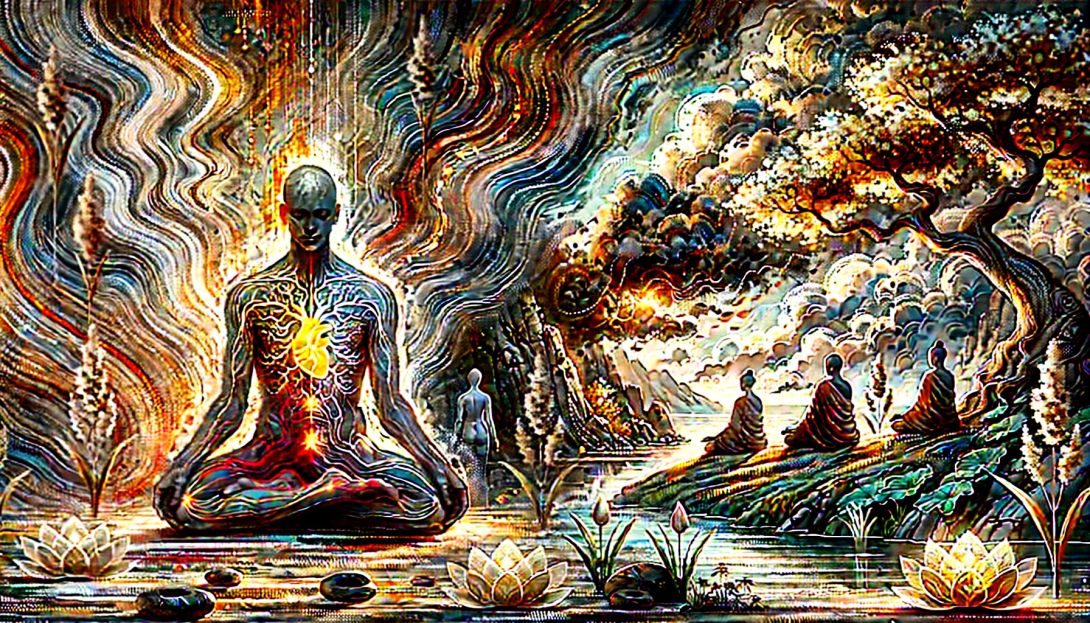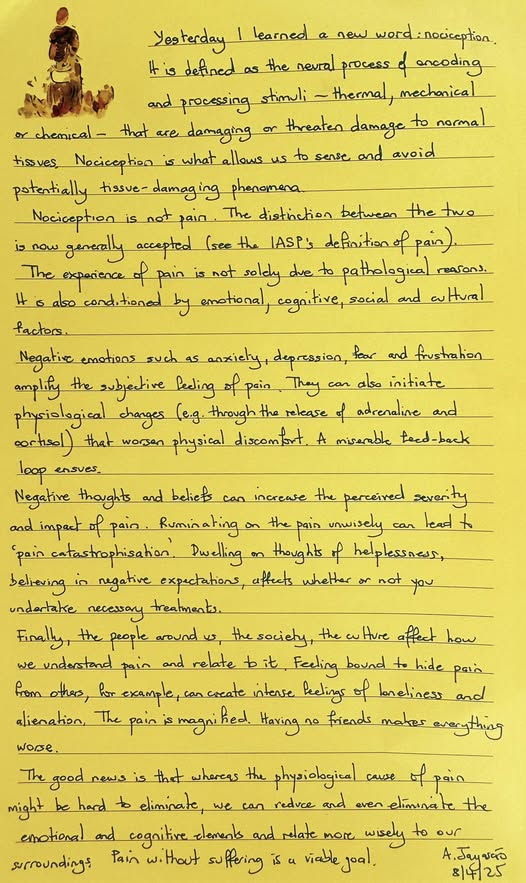
It is defined as the neural process of encoding and processing stimuli—thermal, mechanical, or chemical—that damage or threaten to damage normal tissues. Nociception is what allows us to perceive and avoid potentially tissue-damaging events.

Nociception is not pain. The distinction between the two is now generally accepted (see the IASP definition of pain). The experience of pain is not solely due to pathological causes. It is also conditioned by emotional, cognitive, social, and cultural factors.
Negative emotions, such as anxiety, depression, fear, and frustration, amplify the subjective sensation of pain. They can also initiate physiological changes (e.g., through the release of adrenaline and cortisol) that exacerbate physical discomfort. An unfortunate feedback loop ensues.
Negative thoughts and beliefs can increase the perceived severity and impact of pain. Irrational rumination about pain can lead to “pain catastrophizing.” Preoccupation with thoughts of helplessness, believing in negative expectations, influences whether or not you will undergo necessary treatment.
Finally, the people around us, society, and culture influence how we understand and relate to pain. For example, feeling the need to hide pain from others can create intense feelings of loneliness and alienation. The pain is magnified. Not having friends makes everything worse. The good news is that while the physiological causes of pain may be difficult to eliminate, we can reduce and even eliminate the emotional and cognitive elements and relate to our surroundings more wisely. Pain without suffering is an achievable goal.
A. Jayasāro, 8. 4. 2025

